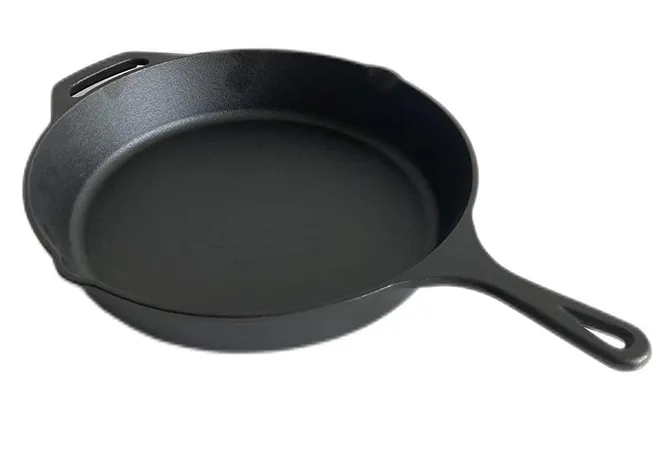
Steps for Successfully Reseasoning Your Cast Iron Skillet at Home
The Essential Guide to Reseasoning Your Cast Iron Skillet
Cast iron skillets have been a staple in kitchens for centuries, revered for their heat retention, versatility, and, when properly cared for, their non-stick properties. However, over time, the seasoning on your cast iron skillet can deteriorate, affecting its performance and food release quality. Reseasoning your skillet is a straightforward process that can breathe new life into your favorite kitchen tool. Here's a comprehensive guide on how to reseason your cast iron skillet to ensure it stays in peak condition for years to come.
Understanding the Seasoning
Before diving into the reseasoning process, it’s crucial to understand what seasoning is. In the context of cast iron cookware, seasoning refers to the layer of polymerized oils that forms on the cooking surface of the skillet. This layer not only helps to prevent rust but also creates a natural non-stick surface. Over time, this seasoning can wear away due to regular use, exposure to moisture, or the use of harsh cleaning methods.
Signs Your Skillet Needs Reseasoning
You might wonder when it's the right time to reseason your skillet. Here are some telltale signs
1. Rust Formation If you notice any rust spots, it’s time to reseason your skillet. 2. Food Sticking If food is starting to stick to the surface more than usual, a fresh layer of seasoning may be needed.
3. Discoloration A dull or uneven finish can indicate that the skillet needs some attention.
4. Flaking If you see bits of the seasoning flaking off, it means the protective layer is compromised.
Reseasoning Process Step-by-Step
Step 1 Cleaning the Skillet
Before you can reseason your skillet, it must be thoroughly cleaned. If the skillet is particularly dirty, you may need to scrub it with a mixture of coarse salt and a small amount of water using a lint-free cloth or sponge. For more stubborn residues, you can use mild soap, but avoid abrasive cleaners that can scratch the surface. Rinse and dry the skillet completely, ensuring there’s no moisture left.
Step 2 Removing Old Seasoning (if necessary)
reseasoning cast iron skillet

If your skillet has significant buildup or rust, you may need to remove the old seasoning entirely. This can be done using a combination of baking soda and vinegar or by using an oven’s self-cleaning cycle. After this, make sure to wash the skillet, rinse it, and dry it thoroughly.
Step 3 Apply Oil
Once clean and dry, it’s time to apply oil. Choose an oil with a high smoke point, such as flaxseed oil, grapeseed oil, or canola oil. Using a paper towel, apply a thin, even layer of oil over the entire skillet, including the handle and the bottom.
Step 4 Heat the Skillet
Next, preheat your oven to around 450°F (230°C). Place the skillet upside down on the top rack of the oven to prevent oil from pooling in the bottom. It’s advisable to place a sheet of aluminum foil or a baking tray on the lower rack to catch any drips. Bake the skillet for about an hour; this allows the oil to polymerize and form a protective coating.
Step 5 Cool Down
After an hour, turn off the oven and let the skillet cool inside. This gradual cooling process helps to prevent the skillet from cracking due to sudden temperature changes.
Step 6 Repeat if Necessary
For optimal results, you may wish to repeat the oil application and heating process two to three times. Each additional layer will enhance the non-stick properties and durability of your skillet.
Maintaining Your Reseasoned Skillet
Once you’ve completed the reseasoning process, it’s essential to maintain your skillet correctly. Clean it after each use with warm water and a soft sponge, and avoid using soap unless necessary. Always dry it thoroughly to prevent rust, and apply a light coat of oil after each cleaning to preserve the seasoning.
Conclusion
Reseasoning your cast iron skillet is a simple yet effective way to enhance its longevity and performance. By following these steps, you can restore your skillet to its prime condition, ensuring delicious meals for years to come. Embrace the ritual of caring for your cast iron, and enjoy the unique cooking experience that only this classic cookware can offer.
-
Season Cast Iron Perfectly with GPT-4 Turbo TipsNewsAug.01,2025
-
High Quality Cast Iron Cookware - Baixiang County Zhongda MachineryNewsAug.01,2025
-
Premium Cast Iron Pan: Durable & Perfect HeatNewsAug.01,2025
-
High Quality Kitchen Durable Black Round Cast Iron Cookware Pancake Crepe Pan-Baixiang County Zhongda Machinery Manufacturing Co., Ltd.NewsAug.01,2025
-
Cast Iron Cookware - Baixiang County Zhongda Machinery | Nonstick, Heat ResistanceNewsAug.01,2025
-
High Quality Kitchen Durable Black Round Cast Iron Cookware - Baixiang County Zhongda Machinery | Non-Stick, Heat Retention, DurableNewsJul.31,2025


